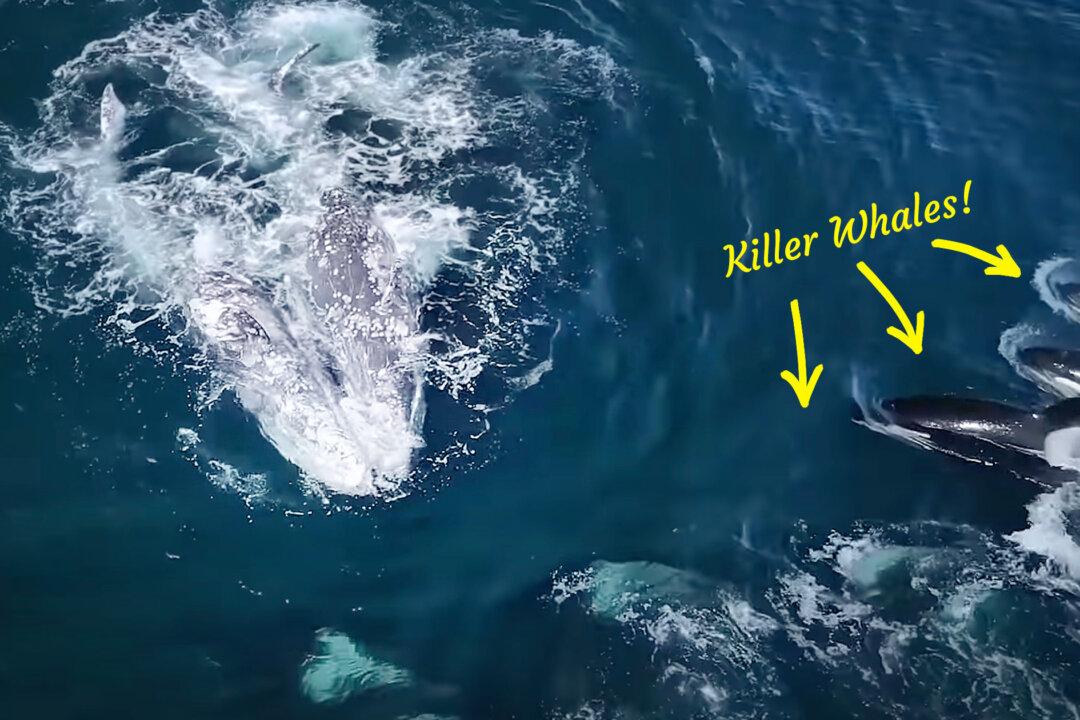Brutal but fascinating footage captured in Monterey Bay, California, shows a dramatic and grisly attack by more than 30 killer whales on two adult gray whales. First, around 10 orcas encroached on the pair of large grays, and as time progressed more and more, and even more, groups arrived to join the fray.
The extraordinary wildlife encounter went on for over five hours. Long-time marine biologist Nancy Black, 60, told The Epoch Times she was amazed to witness it.






